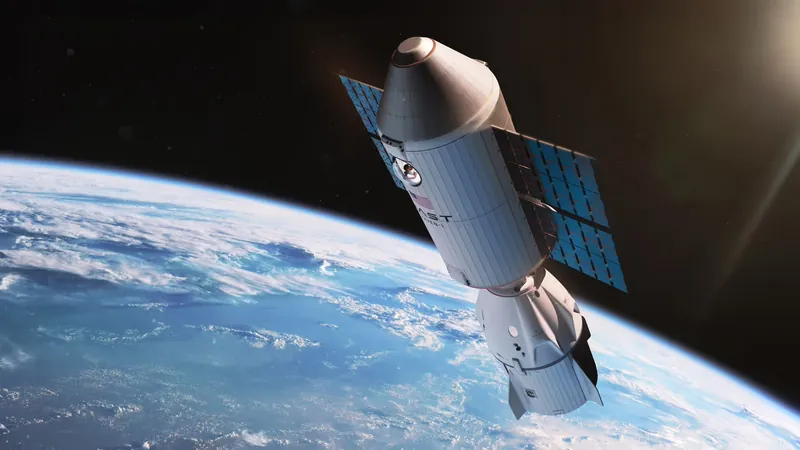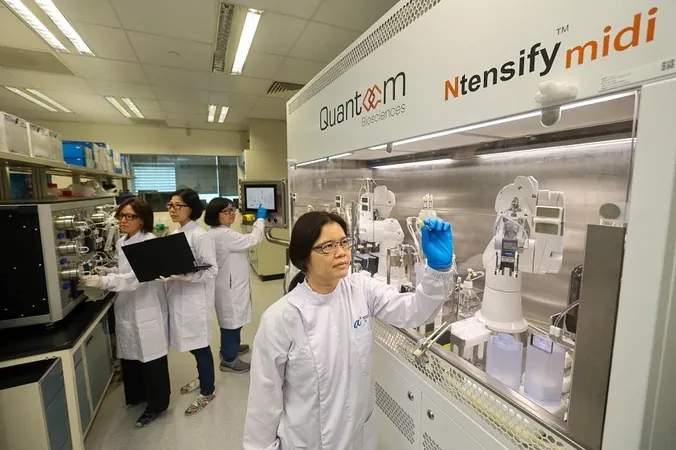
Countdown to the Future: Commercial Space Stations Rise as ISS Faces Retirement in 2030
2024-10-23
Author: Rajesh
As we approach the decade of 2030, the commercial space sector is igniting a race to fill the void left by the retiring International Space Station (ISS). Major players like Axiom Space and VAST are at the forefront of this exciting transformation, actively working on the development of groundbreaking space station concepts that promise to redefine human presence in low-Earth orbit.
Indeed, NASA's timeline for the ISS is ticking down to its planned retirement in 2030, prompting a concerted effort within the commercial space industry to establish alternatives. Recent announcements from VAST, which plans to launch its first space station module next year, underline the urgency and potential of this new frontier in space exploration. Axiom Space is likewise revamping its space station designs and progressing with its construction plans, despite recent challenges that have impacted its leadership and financing.
NASA's Commercial LEO Destinations (CLD) program is pivotal in supporting these initiatives, as it aims to nurture a thriving commercial market for low-Earth orbit operations. As articulated by former NASA Administrator Jim Bridenstine, NASA's revised role envisions the agency as "one of many customers" in this burgeoning market.
In a landmark deal during Bridenstine's administration, Axiom Space secured a $140 million contract to add a commercial module to the ISS, representing a significant step toward establishing a permanent human presence beyond just governmental operations. The CLD program was officially launched in 2021 to build upon previous successes, like the Commercial Crew Program, and offer contracts that encourage commercial partnerships.
Throughout this evolution, several enterprises have emerged to stake their claim in the growing market. Notable projects include:
1. Axiom Station
Scheduled to dock its first module with the ISS in 2026, Axiom has ambitious plans for a free-flying commercial station. However, internal restructuring and financial difficulties have led to a potential downsizing from four expected modules to just two at launch.
2. VAST Haven-1
Set to launch in August 2025, this station will feature the ability to simulate lunar gravity through spinning. It's a pioneering venture and boasts revolutionary designs that address challenges of long-term human habitation in space.
3. Orbital Reef
Spearheaded by Blue Origin and its partners Sierra Space and Boeing, this project aims to create a large, multi-module commercial station, although recent turbulence in their partnership raises questions about its progress.
4. Starlab
Initially conceived by Nanoracks, Voyager Space, and Lockheed Martin, Starlab is designed to facilitate scientific research and commercial opportunities with a completion target in 2028.
However, the transition raises pressing concerns about sustaining a continuous human presence in orbit. With the financial landscape shifting—capital for commercial ventures is now more challenging to secure compared to pre-pandemic days—confidence in the market's viability is being critically examined. Axiom's interim CEO recently intimated that the current market may not support more than one operational commercial station.
The uncertainties surrounding the ISS's structural integrity also create potential hazards. Issues like air leaks in the Russian segment could expedite the need for replacements, possibly delaying the handover to commercial entities. NASA has not ruled out extending the ISS's operational life should these new projects not meet the timeline.
Crucially, NASA continues to assess what a "continuous human presence" means for low-Earth orbit, weighing the implications of transitioning capabilities. A failure to establish a contingency plan could risk the significant research contributions that the ISS has provided over the years.
As we look forward, questions linger: Will these commercial ventures be ready in time? How will they fulfill existing scientific and technological needs in space? The countdown has begun, and the next six years will undoubtedly reshape humanity's role in orbit as we transition from the venerable ISS to a new era of commercial space exploration.
(Featured image: Artist’s impression of the VAST Haven-1 space station, set to revolutionize living and working in space.)




 Brasil (PT)
Brasil (PT)
 Canada (EN)
Canada (EN)
 Chile (ES)
Chile (ES)
 España (ES)
España (ES)
 France (FR)
France (FR)
 Hong Kong (EN)
Hong Kong (EN)
 Italia (IT)
Italia (IT)
 日本 (JA)
日本 (JA)
 Magyarország (HU)
Magyarország (HU)
 Norge (NO)
Norge (NO)
 Polska (PL)
Polska (PL)
 Schweiz (DE)
Schweiz (DE)
 Singapore (EN)
Singapore (EN)
 Sverige (SV)
Sverige (SV)
 Suomi (FI)
Suomi (FI)
 Türkiye (TR)
Türkiye (TR)